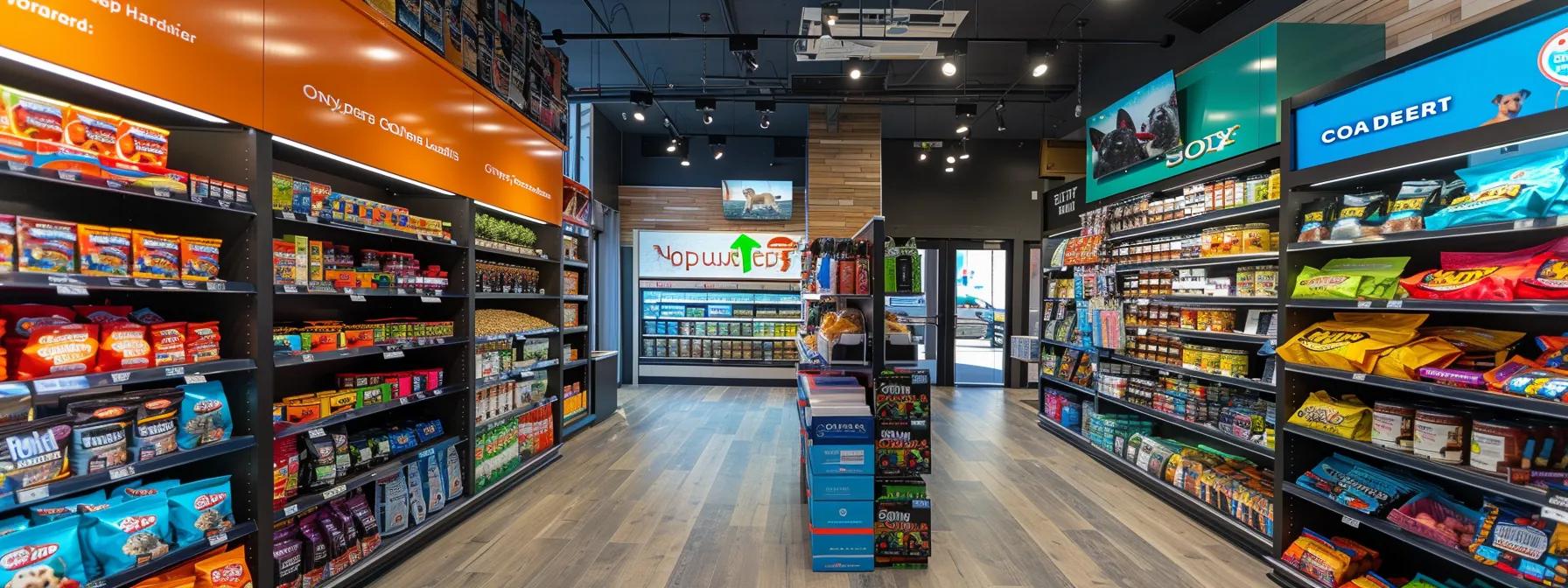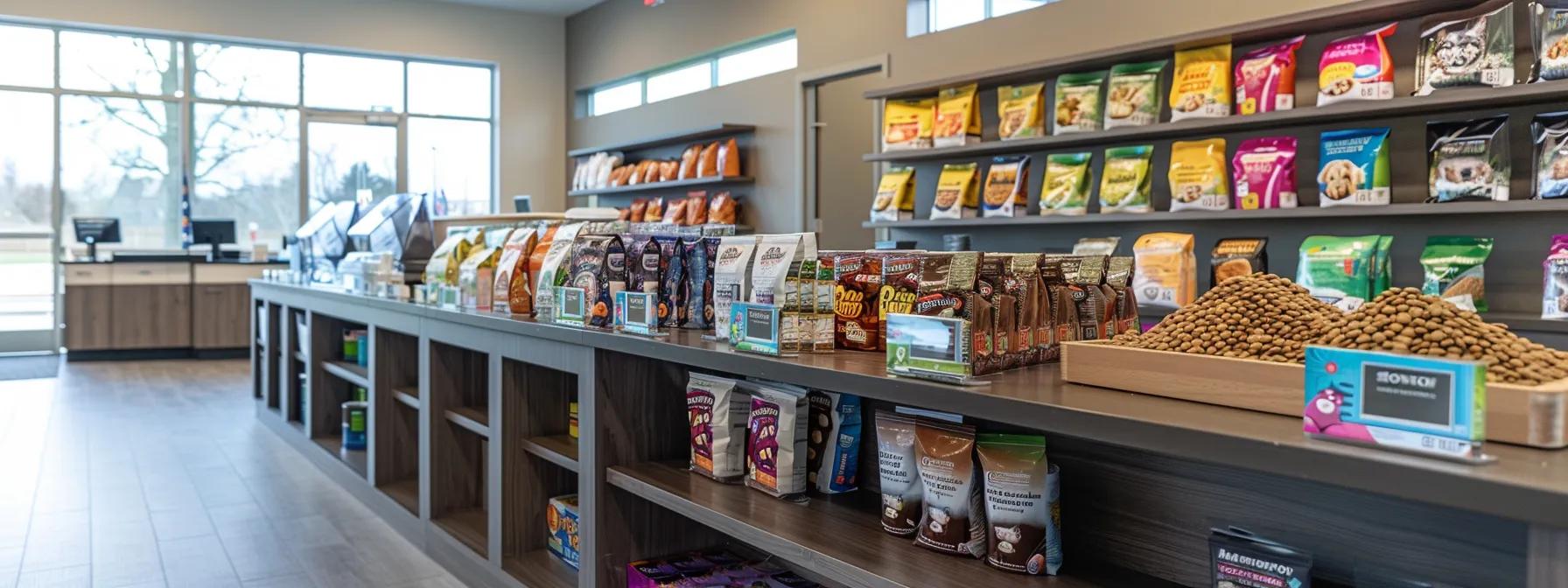
Local Pet Stores vs Online Dog Food Choices
In an era of increasing digital convenience, pet owners must decide between buying dog food from a local pet store or ordering online. This choice goes beyond price; it involves evaluating freshness, expertise, accessibility, and quality. Local pet stores offer personal interactions, transparency, and immediate availability, while online retailers provide competitive pricing, a wide array of specialty diets, and convenient home delivery. This article presents an in-depth analysis of factors such as quality assessment, nutritional content, price differences, and shopping experience to help pet parents understand which purchasing channel best meets their needs.
Throughout this discussion, readers learn the nuances of dog food choices—from physically inspecting a product in-store to benefiting from detailed online reviews and subscription services. Personalized nutrition advice from pet store experts and the extensive product databases available online both play crucial roles in helping pet owners make informed dietary decisions. Environmental factors and economic impacts are also considered so that the final decision supports both pet health and lifestyle priorities.
Evaluating Dog Food Choices at Your Neighborhood Pet Store
Assessing Freshness and Quality of Local Pet Store Dog Food
Local pet stores emphasize freshness and quality. In-person shopping lets pet owners immediately assess a product’s integrity and storage conditions, verify clear expiration dates, and review certified "natural pet food" labels. Seasonal and less processed options further guarantee nutrient density, supporting digestion, coat condition, and energy levels. The tactile evaluation of packaging combined with expert staff advice provides reassurance that the product meets high standards.
Personalized Nutrition Advice From Local Pet Store Experts
Local store employees often have extensive pet nutrition knowledge and offer one-on-one consultations to assess each dog’s age, breed, health, and dietary needs. They can suggest specialized diets such as grain-free or high-protein options and recommend hypoallergenic formulas when needed. This in-person advice, supported by recent customer experiences and cost-benefit insights, builds trust and loyalty among pet owners.
Supporting Community Businesses When Buying Dog Food Locally
Buying locally supports community businesses and strengthens the local economy. Many stores reinvest locally and curate products from regional producers, ensuring naturally sourced ingredients and sustainable practices. Personalized attention based on community demographics further increases trust and fosters resilience within the local economy.
Immediate Availability of Dog Food at Local Shops
A key benefit of local stores is the immediate availability of dog food. In emergencies or when rapid reordering is needed, pet owners can quickly pick up products without waiting for deliveries. This instant access reduces stress and ensures pets’ nutritional needs are met without interruption.
Unique and Specialty Dog Food Finds in Local Pet Stores
Local pet stores often offer exclusive or niche products that may not be available online. Independent shops may carry organic, freeze-dried, or locally sourced options for dogs with unique dietary restrictions or health conditions. Such stores also provide in-person education about product benefits, making them valuable for discovering premium, community-tested dog food options.
Exploring the World of Online Dog Food Retailers

Wide Variety and Brands Available From Online Dog Food Suppliers
Online retailers offer an expansive array of choices, from well-known names like Orijen to artisanal natural pet food labels. Advanced filters enable shoppers to compare products by ingredients, specialty diets, or health claims. Detailed product information and manufacturing certifications allow for side-by-side comparisons so that every pet’s dietary needs are addressed.
Convenience of Home Delivery for Online Dog Food Orders
Online dog food shopping saves time and eliminates the need to travel. With a few clicks, pet owners can have products delivered directly to their door, often with expedited shipping options. Bundled subscriptions further simplify routine purchases by auto-renewing orders and saving on shipping fees, ensuring a continuous supply without extra effort.
Comparing Prices and Finding Deals for Dog Food Online
Online platforms facilitate transparent price comparisons. They often offer discount codes, seasonal sales, and bulk-buy advantages that lower prices by 10–20% compared to local prices. Detailed pricing, combined with features like "price history" and customer match guarantees, empower pet owners to secure the best deals without compromising quality.
Accessing Customer Reviews and Detailed Product Information for Online Dog Food
Online platforms provide extensive customer reviews and detailed product specifications. These reviews offer insights on flavor acceptance, digestion improvements, and overall performance, enabling data-driven decisions. In-depth nutritional breakdowns and ingredient sourcing details help pet owners select foods that align with their dog’s specific requirements.
Subscription and Auto-Ship Options for Consistent Dog Food Supply
Subscription services online offer the convenience of scheduled deliveries based on consumption patterns. These services often provide loyalty discounts and customization options, allowing customers to adjust quantities or switch formulas as needed. This automated system reduces last-minute orders and ensures steady nutritional intake for pets.
Cost Analysis Local Pet Stores Versus Online Dog Food Purchases
Direct Price Comparisons for Popular Dog Food Brands
Local pet stores may have higher prices due to overhead costs, while online retailers benefit from bulk purchasing and lower operating expenses. Studies show online prices can be 10–20% lower. Pet owners should compare price benefits—immediate in-store selection versus long-term savings online—using available price tracking tools.
Factoring in Shipping Costs for Online Dog Food
While many online retailers offer free shipping above a threshold, smaller orders may incur fees. When bulk discounts and shipping fees are considered, online purchasing often remains more economical. Subscription services frequently waive shipping fees, which can further reduce overall costs.
Identifying Potential Savings With Bulk Purchases Online or Locally
Bulk purchases can yield significant savings. Online sites typically offer tiered discounts or automated savings calculators, while local stores may have loyalty programs or in-store promotions. Comparing both options helps pet owners optimize spending and ensure cost-effective, high-quality dog food provision.
Understanding Seasonal Sales and Promotions at Both Retail Types
Both local stores and online retailers offer seasonal promotions. Local stores host sales during community events and holidays, and online shops provide flash sales and exclusive coupon codes during major shopping events. By staying informed about these offers, pet owners can time their purchases for maximum savings.
The Economic Impact of Your Dog Food Purchasing Decisions
Purchasing decisions affect the local economy differently. Buying at a local pet store supports community employment and local supply chains, while online purchases benefit from economies of scale. Pet owners must balance immediate cost savings with broader social and economic responsibilities, sometimes opting for a hybrid approach.
Nutritional Value and Quality Considerations for Dog Food Sources

Examining Ingredient Sourcing and Transparency Local vs Online
Ingredient sourcing is crucial for ensuring high nutritional value. Local stores often provide clear labeling and direct sourcing information, while online retailers supply detailed nutrition panels and third-party certifications. Both channels emphasize transparency, allowing pet owners to choose foods with wholesome, minimally processed ingredients.
Shelf Life and Preservation Methods in Packaged Dog Foods
Proper preservation methods, such as vacuum sealing and nitrogen flushing, help maintain nutrient integrity. Local stores manage stock to ensure freshness, while online retailers detail advanced techniques that preserve long-transported products. Clear expiration dates and storage instructions further inform pet owners about maintaining food quality over time.
Finding Specialized Veterinary Diets Through Local and Online Channels
Both local and online retailers offer prescription diets for pets with specific health issues. In-person consultations at pet stores can provide tailored advice, while online filtering options allow easy browsing by health condition. Veterinary endorsements and rigorous product testing support the reliability of these specialized diets.
The Importance of Reading Dog Food Labels Regardless of Purchase Point
Dog food labels detail ingredient lists, nutritional profiles, and feeding recommendations. Local staff can explain these details in person, while online listings often provide comparative charts and customer reviews. Diligent label reading ensures that pet owners select foods free from harmful additives and aligned with their dog’s dietary needs.
Impact of Fresh Ingredients on Dog Food Quality
Fresh ingredients contribute to better taste, nutrient retention, and overall health. Local stores often highlight “farm-to-bowl” freshness, while online brands like Orijen emphasize fresh, regionally sourced proteins. Consistently fresh ingredients lead to improved coat condition, digestion, and energy levels.
Convenience and Shopping Experience Local Pet Stores Dog Food vs Online
Time Savings When Purchasing Dog Food Online
Online shopping streamlines the process through extensive catalogs, detailed product information, and efficient ordering systems. Features like one-click reordering and scheduled deliveries reduce the time spent shopping and allow busy pet owners to focus on other priorities without compromising quality.
The Benefit of in-Person Product Inspection at Local Pet Stores
Visiting a local pet store lets customers physically inspect product packaging, verify freshness, and even request samples. This tactile experience, combined with direct staff interaction, enhances confidence in product quality and suitability—particularly important in cases where immediate purchase is needed.
Ease of Reordering and Managing Dog Food Supplies Online
Online platforms feature digital dashboards to review past orders, set reminders, and schedule recurring deliveries. Customization options and real-time tracking contribute to a smoother, more predictable purchasing experience that minimizes the risk of supply interruptions.
Navigating Stock Availability Issues at Local Stores and Online
Local stores may face limited stock due to high local demand, while online retailers benefit from robust distribution networks that update stock status in real time. Automated notifications and alternative recommendations online help pet owners plan purchases more effectively despite occasional shortages.
Customer Service Experiences With Local and Online Dog Food Retailers
Local pet stores provide immediate, face-to-face customer service that can quickly resolve issues. In contrast, online retailers offer 24/7 support through email or chat, along with real-time tracking and hassle-free return policies. Both channels strive for high customer satisfaction through their distinct service models.
Making the Best Dog Food Choice for Your Pet and Lifestyle

Considering Your Dog's Specific Dietary Needs and Preferences
Every dog has unique dietary needs based on breed, age, weight, and health. Pet owners should compare ingredient lists, nutritional values, and veterinarian recommendations—whether online or in-store—to identify the best food option for their dog, whether it be grain-free, high-protein, or specialized diets.
Aligning Your Shopping Habits With Your Schedule and Priorities
The choice between local and online purchasing depends on individual schedules and preferences. Busy professionals might favor online subscriptions for convenience, while others may value the immediate support offered by local stores. Evaluating time investment versus cost benefits helps establish a routine that fits personal lifestyles.
Weighing the Environmental Impact of Local Versus Online Dog Food Purchases
Environmental considerations include the carbon footprint of shipping versus local pickup, packaging waste, and support for the local economy. Pet owners who value sustainability may opt for a hybrid approach—buying some items locally to reduce transport emissions while enjoying the bulk savings offered online.
The Role of Expert Recommendations in Your Dog Food Selection
Expert advice from veterinarians and pet nutritionists is critical in choosing the right dog food. Local experts offer personalized, face-to-face consultations based on community insights, while online platforms aggregate professional reviews and clinical data to support informed decisions.
Trialing Different Dog Food Purchasing Methods to Find Your Preference
Experimenting with both local and online purchasing can reveal which method best suits your needs. Recording observations on your dog’s energy, coat quality, and overall behavior can help refine your approach. Combining the tactile benefits of local stores with the convenience and cost savings online may provide the optimal long-term strategy.
Detailed Lists of Key Comparative Factors
1. Freshness Indicators in Dog Food
- Packaging Integrity – High Quality Seals and Labels: Products show clear expiry dates, intact seals, and well-maintained labeling, which helps preserve nutritional value.
- Local Sourcing – Regional Producers and Farms: Products sourced nearby are fresher due to shorter transit times, reducing the need for preservatives.
- In-Store Display – Controlled Environment and Rotation: Regular inventory checks ensure that only fresh products are available.
- Visual Inspection – Appearance and Odor Verification: Inspecting products in person confirms freshness through packaging condition and smell.
- Label Transparency – Detailed Ingredient Lists: Clear ingredient sources and certifications provide quality assurance.
- Staff Expertise – Advice on Recent Deliveries: Staff updates on new batches help indicate product freshness.
- Customer Feedback – Local Reviews and Word-of-Mouth: Positive community feedback reinforces consistent quality.
2. Nutritional Transparency and Product Information
- Detailed Nutrition Labels – Guaranteed Ingredient Percentages: Precise percentages of proteins, fats, and vitamins assure meeting dietary needs.
- Third-Party Testing – Verified Quality Assurance: Independent tests confirm the nutritional claims.
- Ingredient Sourcing Documentation – Provenance of Ingredients: Transparency in sourcing builds consumer trust.
- Online Reviews – Aggregated Feedback on Health Benefits: Customer experiences detail improvements in coat, digestion, and energy levels.
- Scientific Data – Research Backing Nutritional Claims: References to studies support product claims.
- Expert Endorsements – Vet and Nutritionist Recommendations: Professional endorsements add credibility.
- Interactive Digital Tools – Comparison Charts and Calculators: These tools help in comparing nutritional details across products.
3. Convenience Factors in Dog Food Purchasing
- Auto-Ship and Subscription Options – Consistent Supply: Automated deliveries prevent supply gaps.
- One-Click Reordering – Fast and Streamlined Process: Simplifies repetitive ordering tasks.
- Store Locator Services – Quick Access to Nearest Outlets: Helps quickly identify nearby stores and stock.
- Live Chat Support – Immediate Assistance if Issues Arise: Provides fast resolution during online shopping.
- Detailed Tracking Systems – Real-Time Order Updates: Real-time tracking reassures consumers about delivery schedules.
- Inventory Alerts – Notifications for Out-of-Stock Items: Maintains awareness of product availability.
- Flexible Payment Options – Variety of Methods Accepted: Offers convenience in financial transactions.
4. Environmental Impact Considerations
- Carbon Footprint – Reduced Emissions Through Consolidated Shipping: Consolidated shipments lower overall emissions.
- Eco-Friendly Packaging – Use of Recyclable Materials: Emphasis on recyclable materials reduces waste.
- Local Economic Support – Benefits of Community Spending: Builds local economies and reduces long-distance transport.
- Distribution Efficiency – Digital Platform Optimization: Optimized routes lead to more efficient deliveries.
- Sustainable Sourcing Initiatives – Environmental Certifications: Certifications confirm eco-friendly practices.
- Waste Reduction – Bulk Purchasing Minimizes Packaging Waste: Fewer orders result in less waste.
- Energy Consumption – Comparison of Local Store and Online Operations: Highlights trade-offs between physical and digital shopping operations.
Table: Comparative Analysis of Dog Food Purchasing Channels
Before you finalize your purchase method, consider the comprehensive comparison below that weighs key factors between local pet store shopping and online dog food purchasing. This table highlights various attributes and their respective benefits to help you make an informed decision that suits your pet’s diet and your lifestyle.
| Factor | Local Pet Stores | Online Retailers | Benefit | Value Comparison |
|---|---|---|---|---|
| Freshness and Quality | Regular rotation and immediate inspection | Detailed data on preservation methods | Reliable nutritional integrity | High vs Consistent |
| Personalized Nutrition Advice | In-person consultations | Aggregated expert reviews and digital tools | Tailored dietary recommendations | Immediate vs Comprehensive |
| Product Variety | Curated, regional selections | Wide range including niche and international brands | Enhanced selection options | Limited vs Vast |
| Price Competitiveness | Higher due to overhead costs | Often lower with bulk discounts and deals | Cost savings for long-term purchases | Premium vs Discounted |
| Convenience | Immediate purchase and tactile review | Home delivery and auto-ship options | Time-saving and streamlined reordering | Instant vs Automated |
| Environmental Impact | Supports local economy with reduced transport | Consolidated shipping and eco-friendly packaging | Balances economic and ecological concerns | Community vs Global |
| Customer Service | Personalized, face-to-face interactions | 24/7 support with tracking and online reviews | Ensures prompt resolution and transparency | Hands-On vs Digital |
Following this framework helps pet owners evaluate trade-offs and select the best purchasing method to support both their pet’s nutritional health and their own lifestyle priorities.
Frequently Asked Questions
Q: How do I decide between buying dog food at a local pet store versus online? A: Consider immediate product availability, personalized expert advice, and convenience. Local stores offer in-person inspections and consultations, while online retailers provide a wide selection, competitive pricing, and home delivery.
Q: Are online dog food prices typically lower than those in local pet stores? A: Yes, online prices are often lower due to reduced overhead and bulk purchasing advantages; however, factor in shipping costs and available discounts.
Q: Can I trust the quality and freshness of dog food purchased online? A: Reputable online retailers offer detailed product descriptions, preservation methods, and quality certifications. If freshness is a major concern, local stores allow direct inspection.
Q: What are the environmental impacts of buying dog food online versus locally? A: Online shopping can reduce individual trips and consolidate shipments, lowering carbon footprints, while local purchases support community economies and produce less packaging waste.
Q: How can I ensure the dog food I purchase meets my pet's nutritional requirements? A: Always review ingredient lists and nutritional labels, consult expert reviews or veterinarians, and compare products through both online and local sources.
Q: Are subscription services for dog food reliable and cost-effective? A: Yes, subscriptions offer convenience, regular delivery, and often come with discounts and waived shipping fees, making them a practical option for maintaining a steady supply.
Final Thoughts
Both local pet stores and online retailers offer distinct advantages. Local stores provide immediate quality checks, personalized advice, and community support, while online platforms offer expansive product selections, competitive pricing, and subscription convenience. By weighing factors such as dietary needs, cost, time savings, and environmental impact, pet owners can choose a hybrid strategy that leverages the benefits of both channels. Ultimately, making an informed choice ensures that your dog receives the highest quality nutrition to thrive.






